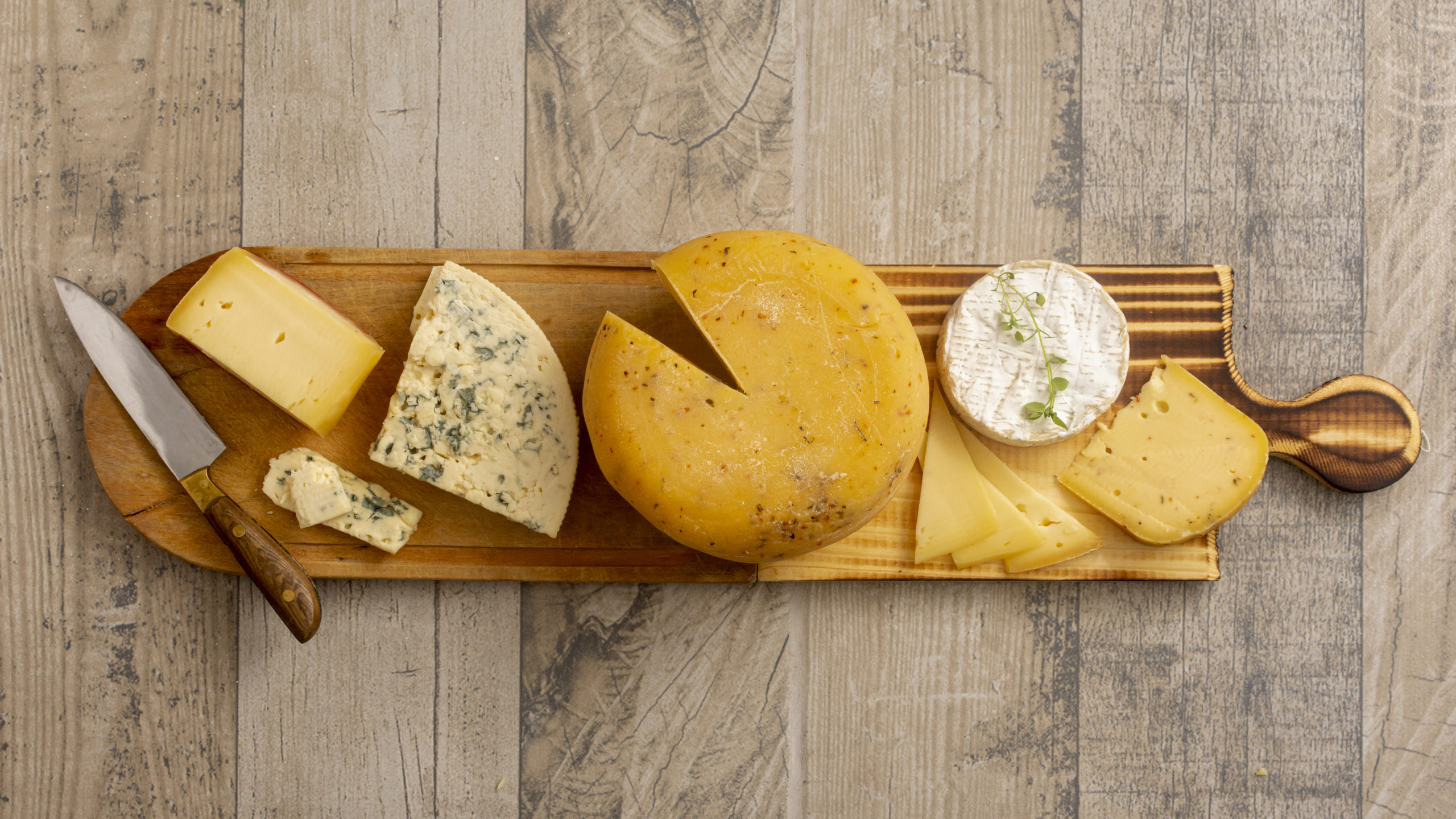If you are lactose intolerant, you may have heard the rumor that Parmesan cheese is lactose free, making it safe for you to eat. We’re here to deliver the good news that the rumors are true! Or rather, it is true that Parmesan contains such a low amount of lactose it does not usually affect those who are lactose intolerant.
The younger the cheese, the more lactose it contains. Creamier cheeses, like ricotta and cottage cheese, are high in lactose because they are so fresh. Cheese lovers with an intolerance to lactose should probably stick to levels of around 2% or lower (for reference, 1% cow’s milk usually has around 5% lactose). It’s also important to remember that every lactose intolerant individual has a different tolerance level for dairy products. Some people cannot handle any lactose at all, so even these low-level cheeses may not be safe for them. If you need to avoid dairy completely, we recommend only eating cheese made from non-dairy milk. It is important to know what level of dairy is safe for you, and you should avoid it completely if you are unsure.
For the lactose intolerant cheese-lovers out there, several different types of cheese contain low enough lactose levels to make them safe for you to eat. The even better news is, Parmesan is not the only cheese that has negligible amounts of lactose. So instead of only answering the common question, “is Parmesan cheese lactose free?” — we’re going to go even further by giving you some other cheese you can turn to if you are lactose intolerant. As a general rule, fresh and unripened cheeses contain more lactose. Hard, aged cheeses frequently contain less lactose because the lactose in the curd changes to lactic acid during aging. That’s why, due to our extensive aging process, Cello’s Parmesan, Asiago, and Romano cheeses are naturally lactose free — so you can cheese confidently and safely when you choose Cello.
If you know that you can handle low levels of lactose, here are a few cheeses that typically fall into a safe lactose range of zero to two percent.
1. Muenster
Muenster is a mild, smooth cheese with an orange rind. It usually has a lactose level below one percent, making it safe for most lactose intolerant individuals.
It is important to note that Muenster is different from Munster. Muenster is an American cheese made from pasteurized cow’s milk, while Munster is a French cheese made from unpasteurized cow’s milk. While they are similar, they are not exactly the same, and Munster may have a higher lactose level.
2. Brie & Camembert
Brie and Camembert will usually have between zero and two percent lactose. The former’s creamy, earthy taste is partially due to its bloomy rind. Brie is extremely similar to Camembert cheese, though Brie has a higher fat content due to the addition of cream, which pushes it a little bit higher on the zero to two percent lactose range. Brie becomes the smoother, milder of the two cheeses thanks to the cream, and Camembert maintains more of that nutty, earthy flavor.
3. Cheddar
Cheddar is one of the most common cheeses available, and for good reason. With a variety of sharpness levels, you can find the right type of cheddar for your tastebuds or dish. Both mild and sharp kinds of cheddar have between zero and two percent lactose content. The character of cheddar cheese will differ depending on where it is produced, the color of the cheese, and how sharp the cheese is. Cheddar is a natural cheese that can vary between off-white and orange.
4. Provolone
Provolone is another popular cheese whose flavor varies depending on where it is produced. It is usually made from cow’s milk, resulting in a firm, grainy texture. Provolone is pale-yellow in color and sealed in a wax rind. While its exact characteristics can vary, Provolone is usually buttery and slightly sweet. Most Provolone has less than two percent lactose content, making it safe for lactose intolerant individuals.
5. Gouda
Gouda is a dense cheese made from cow’s milk with a nutty and sweet flavor. Although there all occasional exceptions, most Gouda falls between that zero and two percent lactose range. Gouda’s full-bodied, rich taste makes it popular as a melting cheese. Our lactose intolerant cheese-lovers do not have to worry about missing out on fondue if they use gouda as their dip!
6. Blue
Blue cheese is most known for its intense smell. Made from cultures of Penicillium, blue cheese has a distinct odor that makes it stand out from other cheeses. However, the aroma does not ruin the flavor. Blue cheese tends to be sharp and salty, and an average of around two percent lactose, even those with lactose intolerance can try this stinky cheese when the craving hits.
7. Swiss
Swiss is a generic name for a variety of cheeses, most of which fall within that safe lactose range of under 2 percent lactose. It usually has a mild, sweet, nutty flavor and is most known for the holes, called eyes, formed during maturation. The light yellow cheese is common and used in a wide range of dishes. There are some Swiss cheeses that can creep up toward about three percent lactose, so be sure to make Swiss a small indulgence rather than a regular part of your cheese diet.
8. Parmesan
Just like that, we’re back at the beginning. Is Parmesan lactose free, really? Most Parmesan cheese averages at right around that two percent threshold, depending on how long it has been aged.
You might be surprised to see how many cheeses aside from Parmesan are available to you as options since Parmesan is one that is so frequently referred to as the safe choice! Hopefully, this list will have helped you find some cheeses that are safe for you to eat when you ask yourself what cheeses are lactose free. If you are lactose intolerant, you do not have to cut cheese completely out of your life. Just do your homework, reference this list, and enjoy!
Now that you know which cheeses anyone who is lactose intolerant can enjoy, learn exactly how to pull together an impressive display in our eBook, Creating the Perfect Cheese Board in 9 Easy Steps.!





